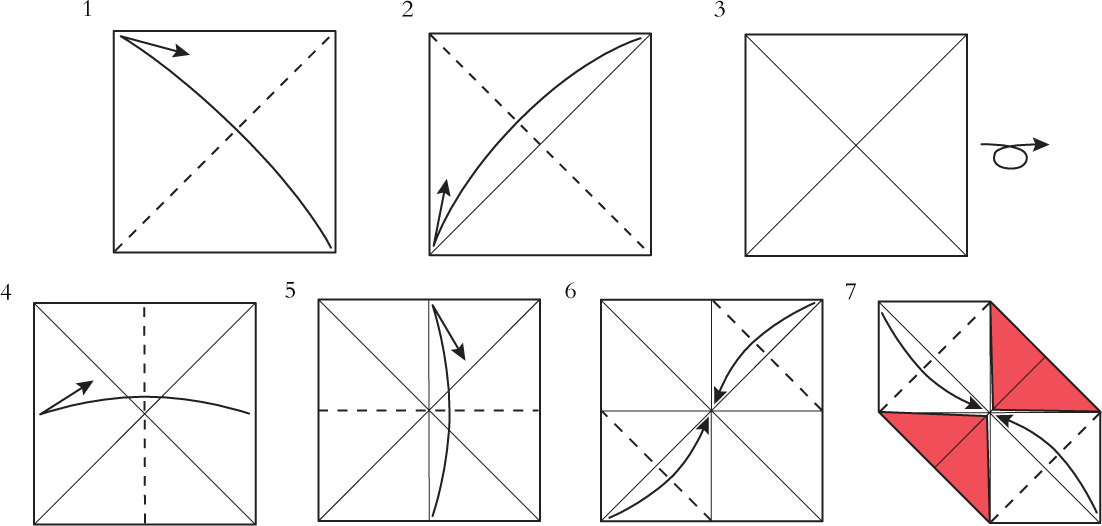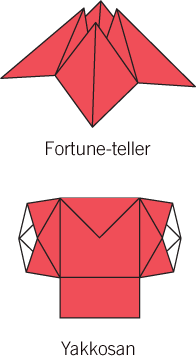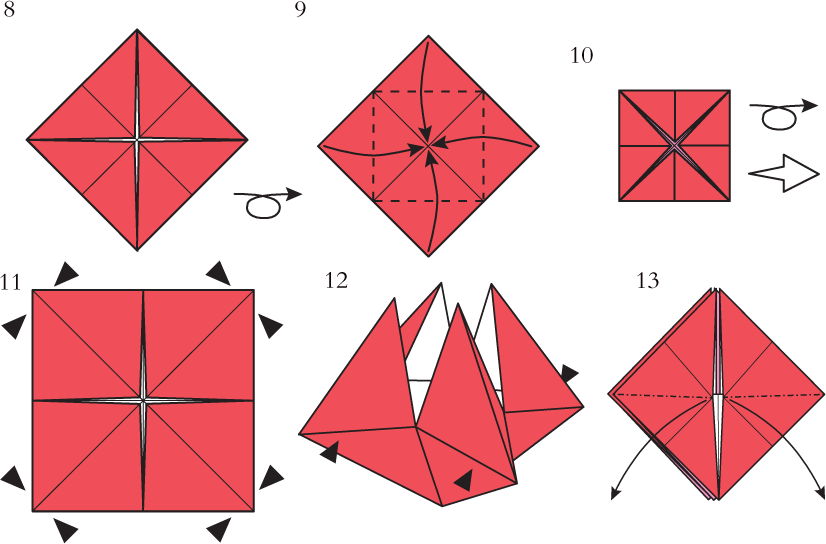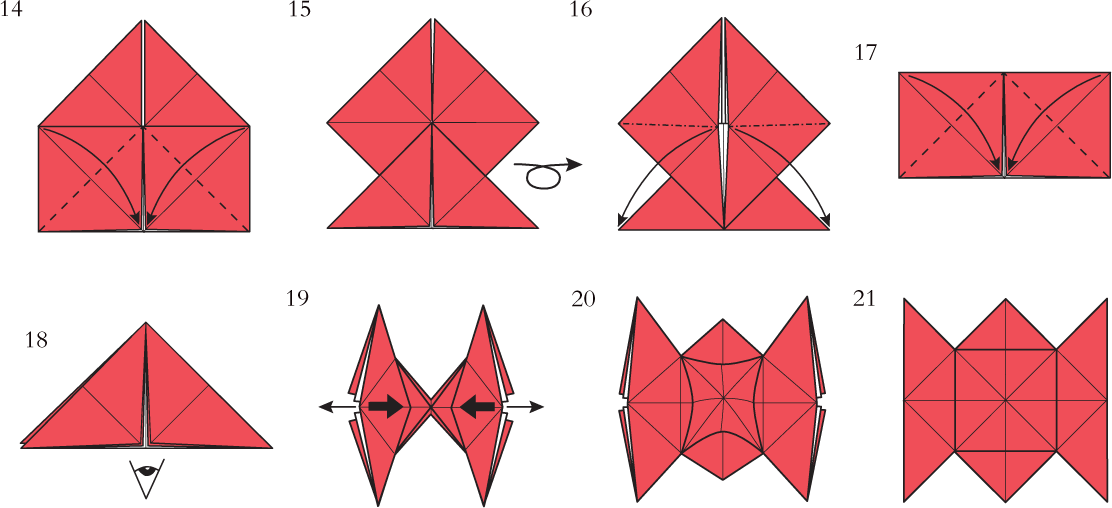
Lover’s Knots were originally the name given to folds of various types which were intended to keep a letter safe from interference, or at least to ensure that if the letter had been opened and read the recipient could tell that this had happened. For fairly obvious reasons, the name has long been applied to this traditional Japanese paperfold. This appears to be a romantic Western interpretation and there is no evidence that this was its original intention or purpose. Lover’s Knot uses a technique known as the pull-out squash, which can also be used to turn the traditional Tsuru into a Flying Crane.

The Pull-out Squash
This is a manoeuvre that is little used in modern origami design but is relatively common in the repertoire of traditional designs. The pull-out squash manoeuvre flattens a point to a rounded cushion-like surface or a flat square. In the case of the Flying Crane the point that is pulled apart and squashed is clearly visible. In the case of the Lover’s Knot it is hidden inside the folds.
In Japan the Tsuru is usually folded in the way shown in picture 28 of the Tsuru diagrams (see here), but in the West it is more common to finish it off by pulling the wings apart in a pull-out squash move to create a three-dimensional cushion-like effect. In this form the design is sometimes called the Flying Crane.
Materials
A single square of any kind of paper. Only one surface of the paper is visible on the outside of the finished design.

To make Flying Crane
Begin with Step 25 of the Tsuru.
1 The next picture is drawn as if viewed from above.
2 Take hold of a wing in each hand, holding them close to the body at the points marked by circles, and gently pull your hands apart. The body of the crane will open out until it looks like Step 27. Don’t flatten the body completely.
3 Curl the wings tips slightly downwards to complete the Flying Crane.
4 The Flying Crane is finished.
Materials
A single square of any kind of paper. Both surfaces of the paper are visible on the outside of the finished design. If using duo paper, or irogami, begin with your square arranged so that the surface you want to form the outside of the knot is facing away from you.

To make Lover’s Knot
1 Fold in half diagonally, crease, then unfold.
2 Fold in half diagonally in the other direction, crease, then unfold.
3 Turn the piece over sideways.
4 Fold in half from right to left, crease, then unfold.
5 Fold in half from bottom to top, crease, then unfold.
6 Fold two opposite corners to the centre.
7 Fold the remaining corners into the centre as well. This is known as blintzing.
Double Blintzing
The Lover’s Knot is made by blintzing a square, turning it over and blintzing it again. This is a common technique in traditional paperfolding. Multiple blintzing is also used to create the possibilities that are developed in such designs as the well-known Fortune-teller (or Saltcellar), Yakkosan (or the Man-servant) and the traditional Water lily fold for a napkin or serviette.


8 Turn over sideways.
9 Blintz this smaller square as well. Your folds will be more accurate if you fold opposite, rather than adjacent, corners inwards first.
10 Turn over sideways. The next picture is on a larger scale.
11 Squeeze the corners together. As you do this make sure the front layers move towards you and the back layers move away.
12 This picture shows this move in progress. Squeeze the corners together completely, then flatten the design so that it looks like Step 13.
13 Open the front flaps at the centre and squash fold them downwards. Step 14 shows what the result should look like.

14 Fold the top corners of the front layer inwards as shown. Crease firmly.
15 Turn the piece over sideways.
16 Repeat Fold 13 on the other half of the paper.
17 Now repeat Fold 14 as well.
18 The next picture shows the design from a different viewpoint.
19 Insert your thumbs into the pockets marked with arrows and gently pull them apart.
20 As you do this, the central spike will flatten. This picture shows the process part way through. Keep flattening the spike until it becomes a completely flat square.
21 The Lover’s Knot is finished.